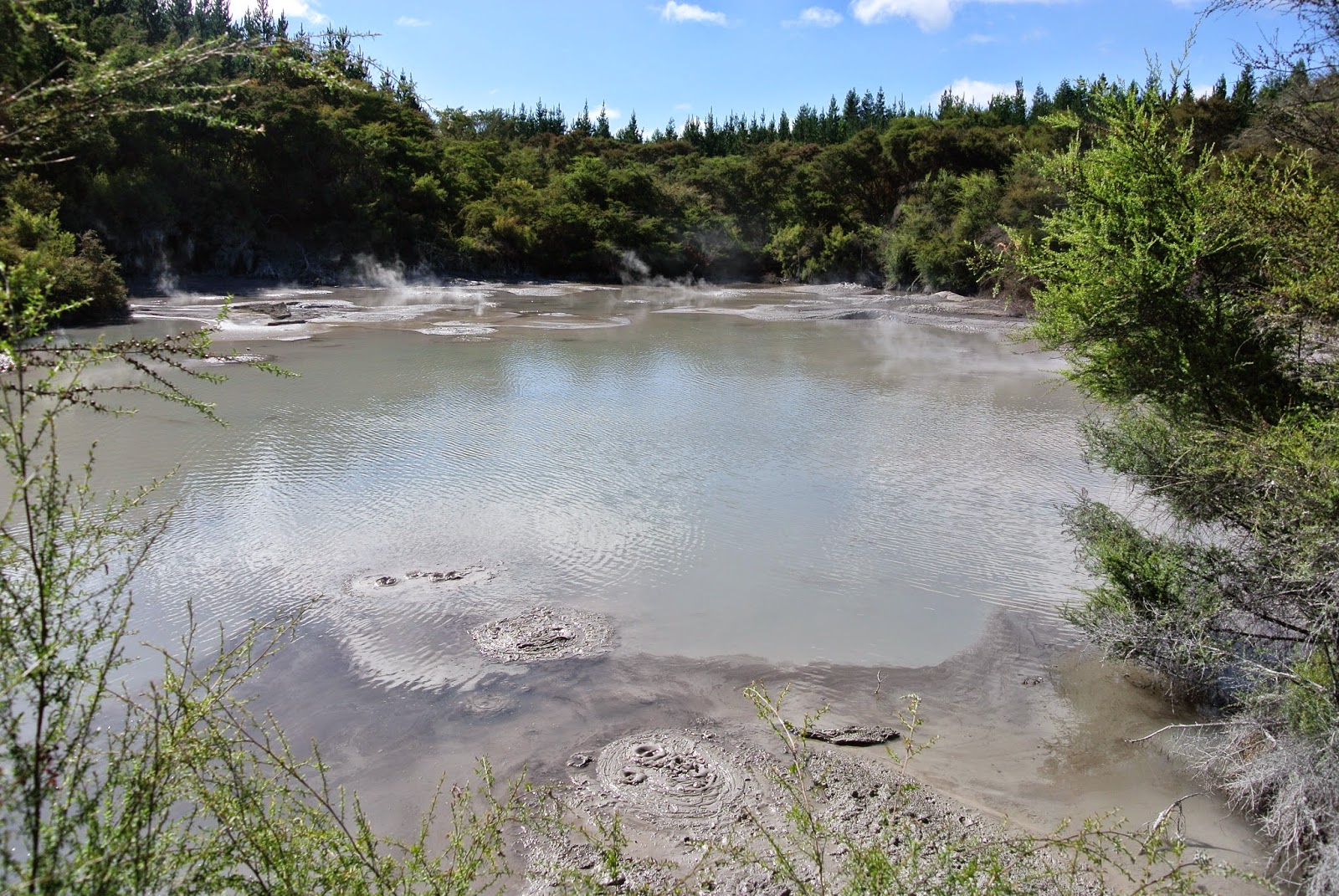Te Huinga: The Lost Mud Volcano
Part of this trip, I and my mom went on a morning tour of the Wai-o-Tapu Thermal Wonderland. We organised this activity through the Thermal Land Shuttle. They picked us from our accommodation and went on a 30-minute drive to the geothermal park
Before entering the 'paid' geothermal complex, our shuttle brought us to view the Waiotapu 'Mud Pool'. This is one of the free attractions that can be enjoyed in Rotorua.
 |
| The Waiotapu Mud Pool, Rotorua |
This mud pool is the site of the 'Te Huinga' Mud Volcano. Unfortunately, this mud volcano disappeared due to erosion and weathering in 1920's. The photo below shows the original mud volcano which is about 3 metres in height.
 |
| Te Huinga Mud Volcano in the early 1900's. Source: Te Papa, Museum of New Zealand |
What is a 'mud volcano'?
According to the Geological Journal, mud volcanoes are "formed by the expulsion of water, gas and mud which originate from within a sedimentary sequence, often from great depth." Aesthetically, mud volcanoes resemble the physical characteristics of 'igneous' volcanoes. As opposed to the latter, mud volcanoes erupt hot mud. In this sense, many do not consider mud volcanoes as 'true' volcanoes.
However, one should not be deceived by the erupting capacity of a mud volcano. Although these landforms do not produce lava, large amounts of ejected mud can pose threat and damage to people and communities nearby.
An example of this can be found in the Indonesian city of Sidoarjo, home to the world's largest mud volcano named 'Lusi'. Since 2006, this mud volcano started to erupt and eject mud of up to 150,000 cubic metres per day. This is enough to cover 10 square kilometres of surrounding land, submerge houses, farmlands, and businesses, and displace 40,000 residents. According to research, this mud volcano will continuously erupt for 20 more years!
What about 'Te Huinga'?
'Te Huinga' is one of tourist attractions within the Waiotapu geothermal complex in the1900's. In the early days, stairs are built to allow visitors to get a closer look of the mud volcano crater. For this to form a considerable height, dry weather is necessary. As mentioned early, wet climate causes mud volcanoes to erode.
 |
| Visitors get a closer encounter with the 'Mud Pool' |
Today, 'Te Huinga' is locally known simply as the 'Mud Pool'. What is left from the original mud volcano is a 17 metre-wide pond of hot and boiling mud. I got an awesome view of the geological phenomenon from the look-out at the end of the track.
References
Allaby, M. (2008). A dictionary of earth sciences. Oxford: Oxford University Press
Martinelli, G., & Judd, A. (2004). Mud volcanoes of Italy. Geological Journal, 39(1), 49-61. doi:10.1002/gj.943
Seach, J. (2015). Lusi mud volcano. Retrieved from http://www.volcanolive.com/lusi.html
Science. (2011). Indonesias's mud volcano to flow on and on. 331 (6012). p. 1120. Doi:10.1126/science.331.6021.1120-b
Stewart, C. (2013). Hot springs, mud pools and geysers - Hot gases, mud pools and craters. In Te Ara - the Encyclopedia of New Zealand, Retrieved from http://www.TeAra.govt.nz/en/photograph/6500/mud-volcano
Te Papa. (n. d.). Te Huinga - Mud Volcano - Wai-o-tapu Valley, Late nineteenth century or early twentieth century, Dunedin, by Burton Brothers, maker unknown. Retrieved from http://collections.tepapa.govt.nz/Object/1185881/download



Comments
Post a Comment